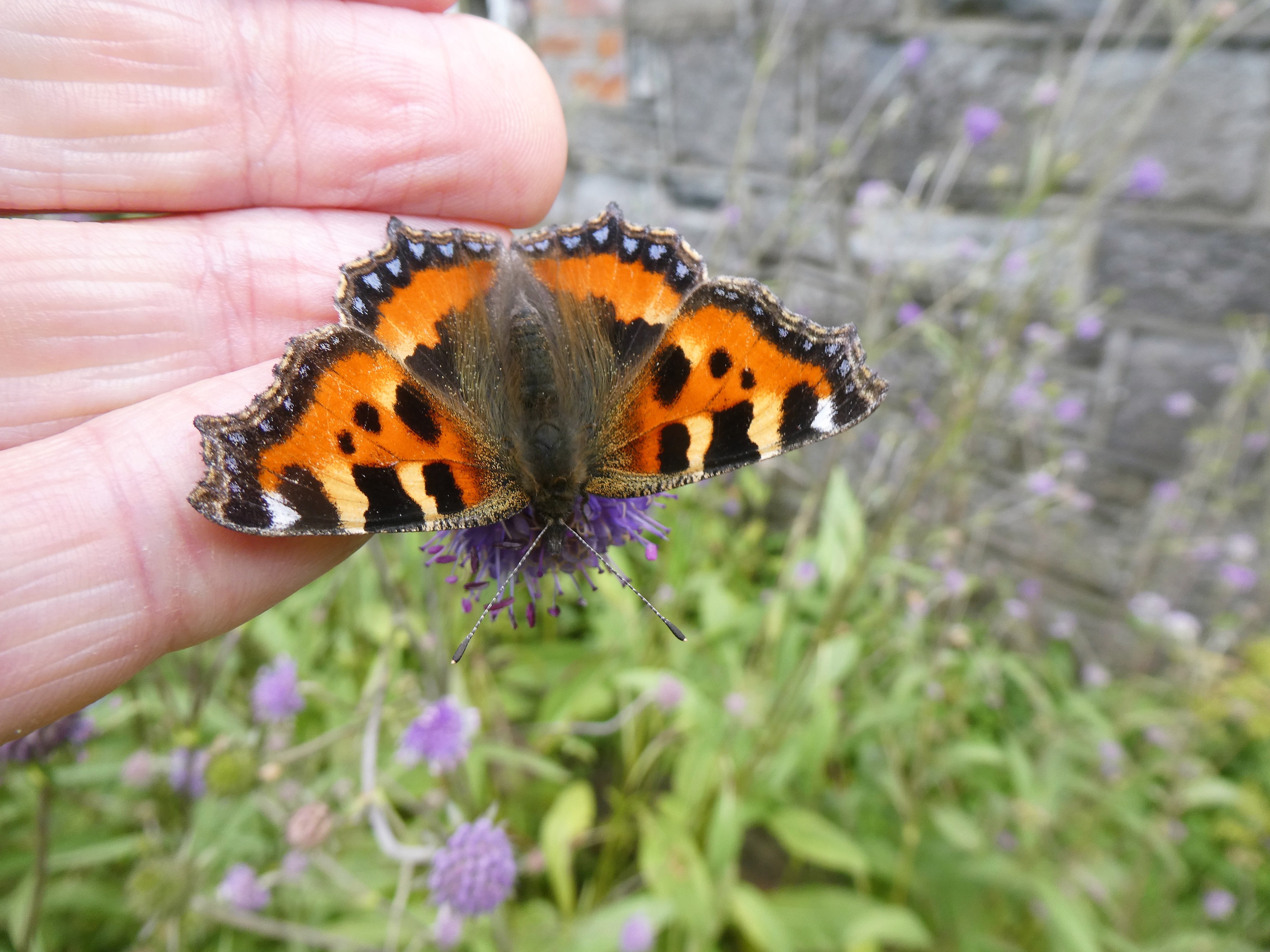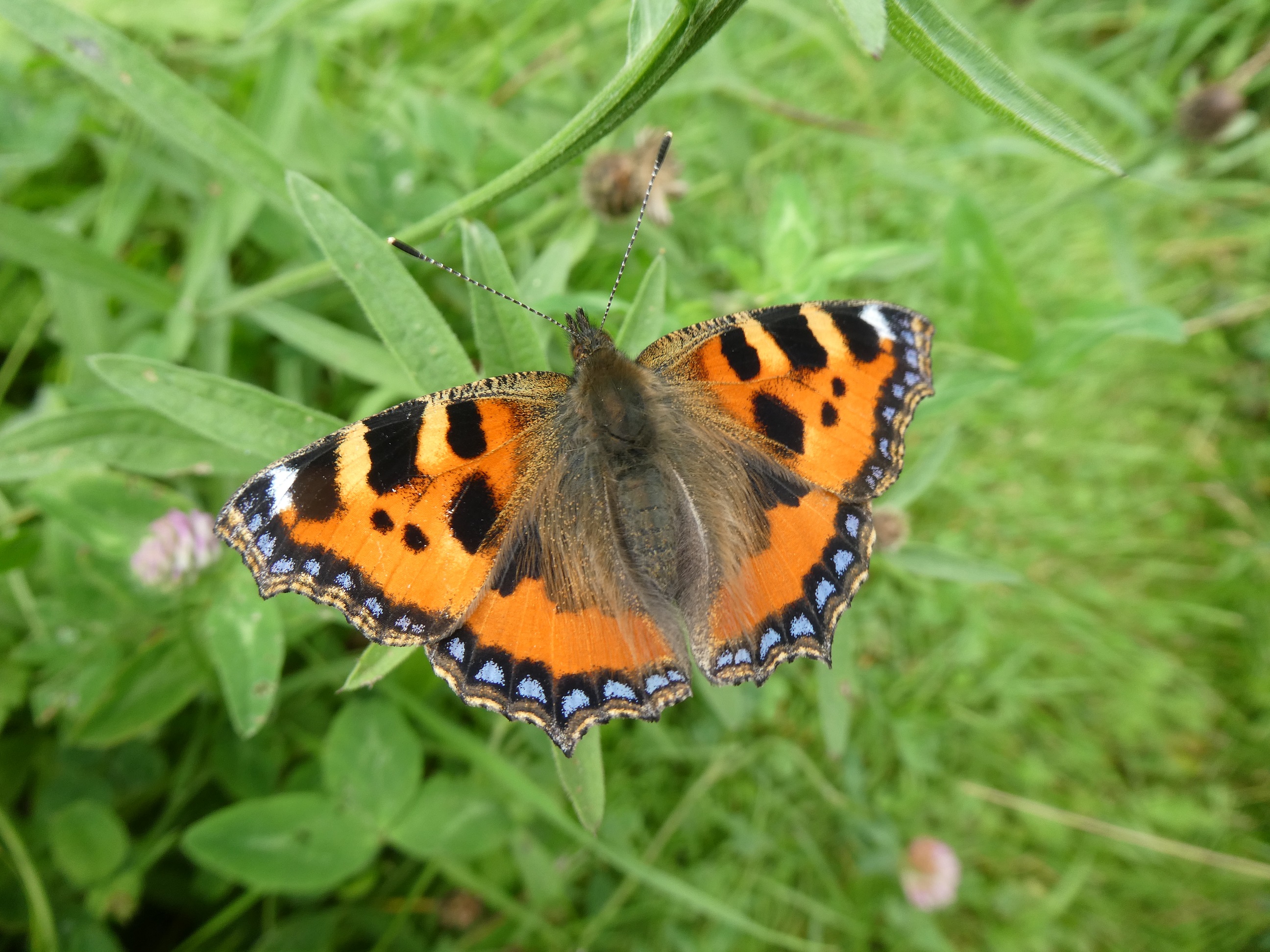For some butterflies a year gets it just right. A lovely, prolonged almost rainless spring with warm sunshine on most days in April and May followed a wet February. These conditions helped the Small Tortoiseshell butterfly to launch its year.
When it wakes from its hibernation in spring, the Small Tortoiseshell needs warm weather to fly. The butterfly needs to feed, find mates and the females look for nectar to develop their eggs and then seek suitable breeding sites. The larval foodplant, the Stinging Nettle, is not well developed in March and early April so the females must continue to feed and develop their eggs. When she is ready to start laying her eggs, it is vital that suitable nettles exist. By mid-April this year, the nettles reached a suitable size. There were excellent weather conditions for egg-laying. The sunshine helped females that had laid their first egg batch to take nectar to develop further egg batches and disperse to reach new breeding sites. The eggs, larvae and early pupae developed quickly in the warm sunshine during May, with the first new-generation adults observed by June 1st.
After some very hot weather during the first week in June, the rest of the month saw above-average rainfall and temperatures near the average for June. This helped because a continuation of the drought conditions that developed over the spring months would have reduced the suitability of the nettles. These were now refreshed, and grew strongly, making for excellent breeding conditions for the vast number of Small Tortoiseshells that emerged during June and July. Most of these butterflies stayed close to nettles and bred. The off-spring of these mid-summer breeders are appearing now, in very large numbers in some eastern areas.
Unlike their parents in mid-summer and grandparents in spring, this generation, the second born in 2020, will, in the vast majority of cases, not breed this year. It is their need to feed heavily in preparation for a long overwintering period that brings them to our gardens and to our attention. Seeking nectar, the butterfly turns up in warm, flower-rich, sheltered areas near suitable overwintering sites where they settle to feed. Their focus on feeding without expending energy makes them very easy to approach with some so docile that they can be touched without taking flight.

These make for lovely viewing and there have been spectacular numbers, with hundreds seen at Pollardstown Fen, County Kildare on August 30th. On that date, I saw around 400 on the bog at Lullymore and Lullybeg in County Kildare and 22-27 in my garden in County Meath each day for most days over the past two weeks (to September 1st). One indication of high numbers for anyone who does not seek the butterfly in its prime feeding stations is that it can be seen in low numbers flying across roads, fields, parks and other areas in its search for food.
The weather conditions we are seeing now with mild air and good sunshine is of great benefit to this overwintering generation because they have the conditions needed to move to good sites, feed and seek places to see out the colder months.
We urge you to enjoy seeing the butterfly because its current high abundance is quite short-lived. A butterfly that needs to survive for several months in the adult stage cannot expose itself for too long. The habit of feeding in large groups makes it an easy target for insectivorous birds, especially members of the tit family, wrens and robins. The Small Tortoiseshell is slowing down at this stage (its increasing weight and falling temperatures make it heavier and slower), making it easier to approach and catch. In short, it spends only a few weeks feeding before hibernating until next spring.
During September numbers fall, although newly emerged individuals that arise from eggs laid later in summer, probably by late-emerging or older females will appear into October. Some of these October butterflies may represent a small third generation, meaning that their parents that emerged during August bred rather than attempting to overwinter.
Up to three generations of the Small Tortoiseshell may overwinter in some years. Indeed, some of the first generation of Small Tortoiseshells that arose from eggs laid last spring do not breed in June and July but enter hibernation. These are probably few in number in most parts of Ireland, but this overwintering strategy of some first-generation adults is implied from observations made of adult behaviour in Counties Dublin, Meath and Donegal. Therefore, there may be three generations of the butterfly in hibernation over the winter.
Regardless of which generation the butterfly is from, it enters our attics, sheds, outbuildings, homes, woods, dense scrub, caves and other sites that will shelter it until spring.
When they awake in good weather, usually later in March we are looking at butterflies that range in age from five to eight months. We are also looking at siblings, aunts, uncles and cousins on the wing at the same time. This does not necessarily mean that all of these individuals are breeding with each other because the Small Tortoiseshell is a mobile butterfly that will travel to seek mates and breeding sites. However, in Britain, it has been found that the butterfly does not travel large distances across the country because Small Tortoiseshells from different regions show a different response to day-length. Thus, larvae that were taken from Scottish populations always produced adults that delayed breeding until spring, irrespective of the amount of daylight they received. In the south of England, the butterfly has shown the ability to produce three generations.
There is much more to learn even about common butterflies like the Small Tortoiseshell. A study in the UK found that much of the variations in the Small Tortoiseshell’s phenology (the study looked at emergence peaks) are unrelated to temperature or northing (latitude) (Hodgson et al. 2011). Whether a similar study carried out here would show a similar result is unknown. However, the UK study did not take account of various effects of winter minima, summer maxima, rainfall, and cloudiness. That is unfortunate; for example, the issue of cloudiness is relevant because the species is expected to respond to features such as photo-period (amount of light received, day-length).
It appears that the butterfly is faring better in Ireland than in Britain. Here the population is regarded as stable (‘2019, the year of the Painted Lady’, The Irish Butterfly Monitoring Scheme Newsletter, Issue 13). ) while in the UK it has shown a significant major decrease in abundance of -73% from 1976-2014 (Fox et al. (2015). The State of the UK’s Butterflies 2015. Butterfly Conservation and the Centre for Ecology & Hydrology, Wareham, Dorset.). It should, however, be noted that the Irish abundance study covered a shorter time (2008-2019) than the UK study. We can add 2020 as another year when the Small Tortoiseshell abounded in Ireland. Long may it continue to flourish.


